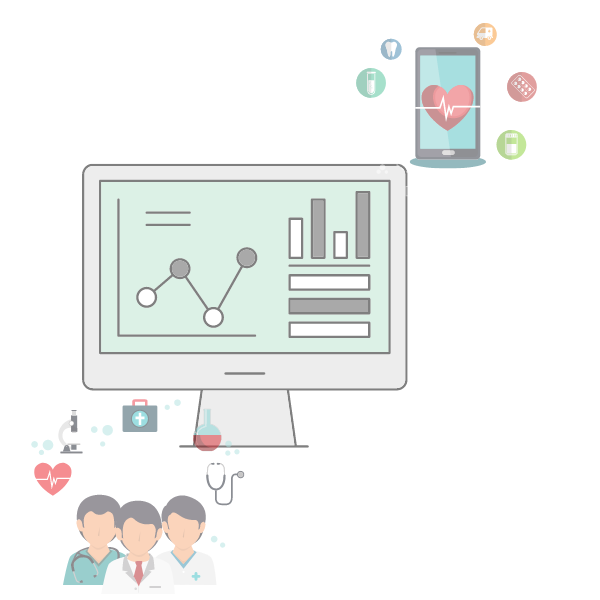Risk Adjustment 101: Everything You Need To Know
Dive into risk adjustment: its significance in health plans, benefits, and its real-world application. Get informed today!

Episource Bulletin
Dive into risk adjustment: its significance in health plans, benefits, and its real-world application. Get informed today!
Dive into healthcare risk adjustment models: from HCC to Medicare, Medicaid, and ACA. Understand the science behind equitable healthcare financing.
Find out how Driscoll Health Plan was able to identify the most prevalent diseases within their primarily pediatric population with Episource Analyst.
Master the complexity of Medicaid state-to-state guidelines with 3 risk adjustment strategies for success.
ICD-10 combination codes allow you to report a single code which includes multiple characteristics of the diagnosis.
Episource Analyst is Episource’s risk adjustment & HCC analytics platform to identify opportunities and launch RAF campaigns.
When well-designed and properly implemented, NLP coding tools can drive the speed and accuracy of medical coding, leading to better patient outcomes.
Ensure higher and more accurate diagnosis capture with Episource Coder.
Episource and ProMedica discuss how to efficiently follow-up on high-risk diagnosis codes in preparation for a potential future audit
Episource and ProMedica discuss their risk adjustment solutions for lowering compliance risk.
Access the case study slides for a walk-through on optimizing risk adjustment vendor methods to build a strong vendor/health plan relationship
In this presentation Episource experts discuss practical, hands-on solutions to address the issues associated with maximizing RAF capture.
Webinar discussing how risk-bearing organizations can recover lost revenue due to claims leakage by identifying the common causes and ways to...
Our educational resource on pediatric Risk Adjustment coding. This white paper covers common errors and instructs how to improve documentation.
As adoption of value-based care, risk-adjusted healthcare models increases, it’s important for plans and payers to take stock of their...
Our educational resource on Risk Adjustment coding for newborn ailments. This white paper covers common errors and instructs how to improve...
After becoming a full-service client only 2 months into their initial engagement, THP expanded into other lines of business and surpassed their chart...
Despite having 98% coding accuracy and undergoing two rounds of reviews by two separate coding vendors, a leading health plan decided to pilot a new...
Navigate complex data and turn analytics into action with cutting-edge tools and technology.
A large health plan in Puerto Rico turned to Episource for reconciliation and submissions expertise.
Download Episource's RISE Risk Adjustment Fall Forum 2021 presentation slide deck on how to leverage NLP in your second-level reviews.
To help ACOs and newly-formed DCEs navigate the challenging healthcare landscape of today, Episource has created a toolkit for taking risk.
Learn the importance of implementing NLP to increase accuracy and surface complex diagnoses, particularly in the ACA market.
Learn how innovative platform solutions can drive better patient care and program performance.
Strategies for Strengthening the Payer-Provider Relationship
Master the complexities of Medicaid risk adjustment with three analytics-driven strategies.
Understand how to turn trends in heavily weighted codes into action
The 2019 final notice, CMS has advised on the implementation of the 21st Century Cures Act, requires that any changes made be phased in within 3...
Health plans must prioritize resources to focus greater effort on members that have HEDIS gaps.
The use of analytics for the proactive review of and oversight into coding and submission processes has become more critical than ever.
ICD-10 combination codes allow you to report a single code which includes multiple characteristics of the diagnosis.
Clinical suspecting is the process of identifying possible conditions that are indicated in clinical data but remain undocumented.
One of the primary challenges ACOs face with risk adjustment is patient targeting.
The Centers for Medicare & Medicaid Services (CMS) has a goal for 100% of providers to accept downside risk by 2025.
Over the past decade, the Centers for Medicare & Medicaid Services (CMS) has developed more than 50 Alternative Payment Models (APMs) with the goal...
Combine analytics and expertise to find and prioritize interventions that impact financial and clinical outcomes.
COVID-19 continues to create uncertainty for healthcare organizations, particularly as the new Delta variant moves across the globe.
Accuracy, efficiency, and compliance: these are all qualities health plans aim to achieve in their risk adjustment. Is 95% Coding Accuracy Good...
Accuracy, efficiency, and compliance: these are all qualities health plans aim to achieve in their risk adjustment. Is 95% Coding Accuracy Good...
Final Medicare Shared Savings Program (MSSP) rule, called “Pathways for Success,” for Accountable Care Organizations (ACOs).
The transition from RAPS to the EDS for calculating Medicare Advantage risk scores, payer organizations should have a plan to minimize system errors.
The shift from RAPS to EDS for Medicare Advantage is a massive undertaking. CMS released Parts 1 & 2 early to give plans plenty of time to prepare.
For CY 2022, CMS has proposed that encounter data submissions would be the only source used in risk score calculations. RAPS would no longer be used.
The Encounter Data System (EDS) and Risk Adjustment Suite of Systems (RASS, which is more commonly referred to with the catch-all RAPS).
Benchmarking is the primary means through which CMS holds ACOs accountable and evaluates how effective they have been in lowering expenditures.
Be the first to know about new risk adjustment insights to build or refine your program with the tools and knowledge of today’s industry.